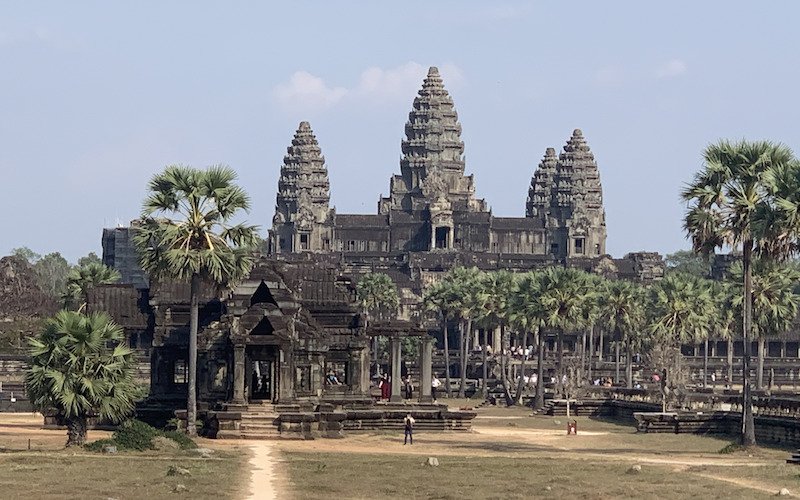Cambodia is fortunate to have one of Asia’s simpler weather systems. The country has two separate weather seasons, but you can travel to Cambodia all year round. Typically, the entire country is likely to have quite similar weather patterns, due to the fairly uniform latitude and altitude that is throughout Cambodia.
Best time to visit Cambodia
There are two very distinct seasons – dry (October-late April) and wet (May-September). Within each season there are disparities in temperature, with the last few dry months leading up to the wet season (March and April) and the early months of the wet season (May and June) normally being the hottest of the year with temperatures of around 35°C at times. Humidity is at the highest during March and April while the colder months of the year are between October and December, though this is relatively cool for Cambodia but not chilly with temperatures staying around 24°C-26°C.

Visiting Cambodia in the Dry Season
Cambodia’s dry season lasts from October to April, when the dry north-east monsoon arrives, characterised by hot wind blowing across the entire country. While November to January are fairly cool (high 20°C’s), by April the weather is sweltering making early morning and late afternoon tours, with a few hours by the hotel pool during lunchtime, the preference for many. Due to the hot weather this is naturally the season when Cambodia’s tourist numbers peak. In more remote parts, such as the north east regions of Mondulkiri & Ratanakiri, the roads are at their best and journey times are shorter because of this. Kep and Sihanoukville on the south coast are popular during this season as they bask in the brilliant sunshine and sea conditions are very favourable.

Visiting Cambodia in the Wet Season
Cambodia’s wet season comes from the southwest monsoon and lasts from May to October, bringing with it about 75% of Cambodia’s annual rainfall. Across Cambodia, throughout a lot of the rainy season, daytime temperatures average from 25°C and 27°C. The early months of the wet season (May – July) stay very hot with rare rainfall usually in the form of short downpours. In the concluding months (late July – September) the rain is normally more constant and is heavy at times, especially in rural and coastal regions. Travel in the more secluded corners of the country, such as Ratanakiri and Mondulkiri, is almost impossible due to the state of the journeys and roads into the north east are unwise during the peak wet season because of this. There is also quite limited access to Bamboo Island (near Kep) due to the high seas.
However, travelling in monsoonal Cambodia does also have its advantages. The dust is gone and the lush greenery of the countryside returns. Angkor Wat in particular is beautiful in the wet season, with moats packed with water and a major drop in visitor numbers.
High rainfall makes it the perfect time of year to visit the flooded forests and floating villages of Tonle Sap Lake by boat, as it swells to more than 5 times its size during wet season. The wet season is truly a sight to behold.
What to Pack for Cambodia
Take light cotton tops, long comfortable trousers and maxi dresses that cover your shoulders. Thailand is a conservative Buddhist county and you are likely to be refused entry to top sites like the Phnom Penh Royal Palace and Angkor Wat with shoulders showing and shorts or short skirts. You can pack shorts and vest tops for hanging around your hotel or the pool.
Pack a water bottle because many guest houses are eco friendly and have a refill and reuse policy to cut down on plastic waste. The drinking water is fine and many hotels supply cold purified drinking water.
Bugs bite particularly in the evenings in Cambodia and so a bug repellant is essential. Also the sun can get hot – this Christmas and New Year temperatures were exceeding 32 degrees and so sun screen is another essential.
Further Reading on Cambodia
If you enjoyed this blog on the best time to visit Cambodia, you might also like to read my ultimate Angkor Wat Guide. You you might also be interested in reading in more detail about some of the best temples of Angkor Wat including Banteay Samre and the Roluos Group temples. Also if you are visiting Cambodia I was also recommend spending some time in Phnom Penh and Battambang.

